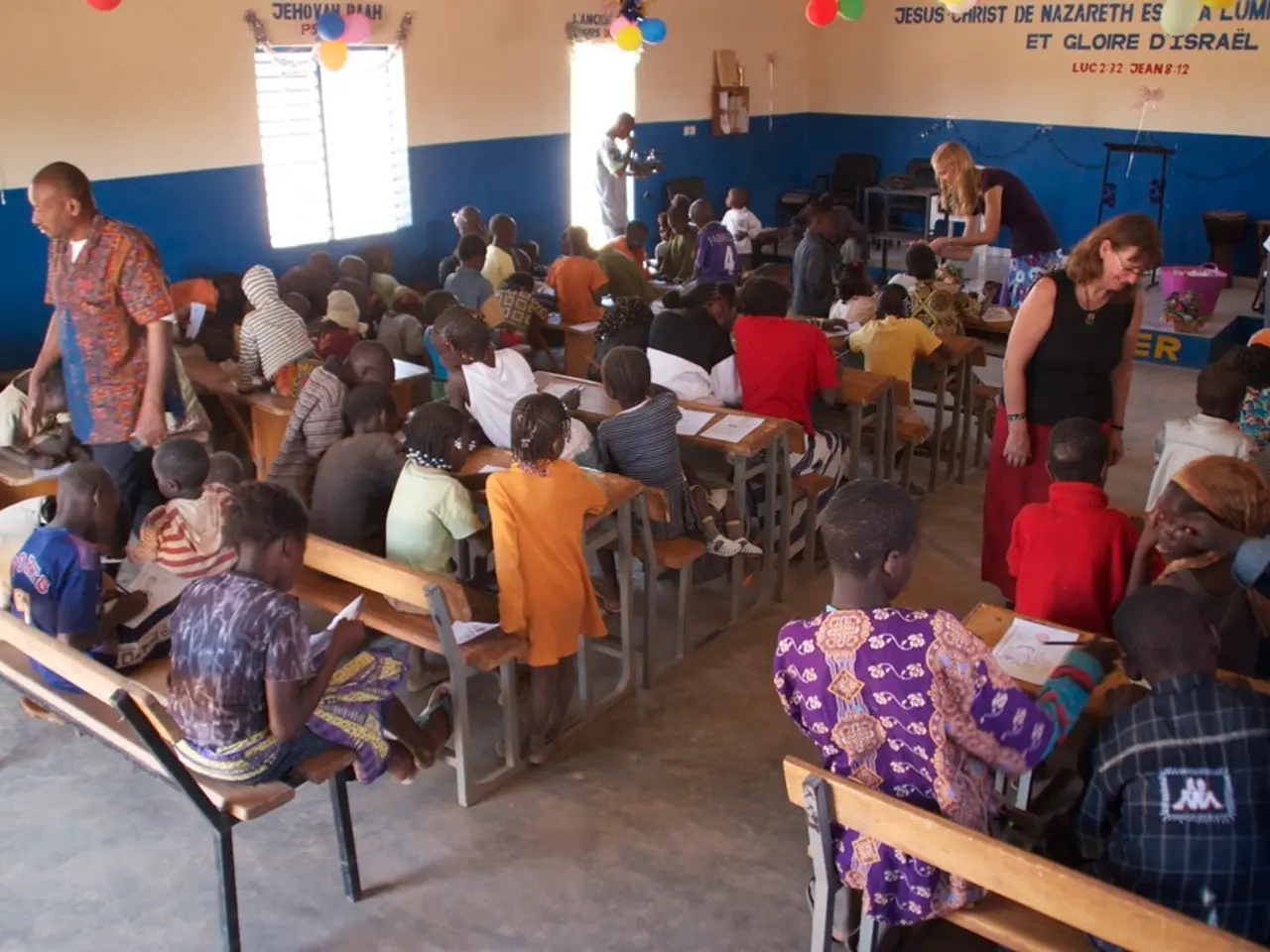Significant layoffs at childcare facilities - Significant layoffs in childcare sector
In the German state of Brandenburg, a significant shift has been observed in the child daycare sector over the past five years. According to recent reports, the number of staff in child daycare facilities decreased from 1,014 in 2019 to 663 in 2024, while the number of children enrolled increased from 187,774 to 202,681 during the same period.
The aim of child daycare in Brandenburg is to ensure compatibility of family and work, and to meet the legal claim of the child to education, care, and supply. The system typically consists of small groups of children, with age groups ranging from infancy to six years old. Child daycare can take place in care workers' households or other facilities.
The decrease in staff and the simultaneous increase in children has led to criticism from politicians like CDU's Kristy Augustin, who has questioned the lack of uniform implementation of new child daycare rules and the absence of targeted state measures for networking and structural support.
The Youth Ministry in Potsdam and the Ministry of Education have responded to these concerns, highlighting the availability of training courses for daycare workers offered by the Social Pedagogical Training Institute Berlin-Brandenburg (SFBBB). The SFBBB provides training for child daycare providers, as well as for specialists and practice consultants, on various topics, both online and in person.
However, the reasons behind the reduction of child daycare staff in Brandenburg remain unclear. Several factors could contribute to this trend, including increasing regulatory requirements, staff shortages and recruitment challenges, implementation delays or funding gaps, and demographic and policy factors.
New child daycare laws often raise staff qualification standards, staff-child ratios, and working conditions, which can make it harder to hire or retain personnel if the workforce cannot meet these requirements quickly. The daycare sector in many regions faces staffing shortages due to low wages, high workload, and burnout, contributing to personnel reductions even as demand rises.
Implementation delays or funding gaps can also result in understaffing, as new laws require financial and administrative support for implementation. Insufficient funding for additional staff or inability to scale operational capacity may lead to understaffing situations.
Demographic and policy factors might indirectly affect daycare staffing by influencing parental decisions or funding allocation dynamics. While child enrollment increases, other family policies (such as birth subsidies or benefits for stay-at-home parents) might indirectly affect daycare staffing by influencing parental decisions or funding allocation dynamics.
These laws aim to improve quality, safety, and accessibility but may unintentionally exacerbate staff shortages if requirements are stringent and support is inadequate. The implementation phase can temporarily strain daycare centers, causing personnel reductions or operational challenges until adaptations are fully realized.
Without specific regional data for Brandenburg, this assessment reflects general trends, combining known challenges of the childcare sector with possible effects of policy changes during 2019-2024. For a precise explanation, detailed local studies or official reports would be necessary.
The "Tagesspiegel" has reported on this development in child daycare in Brandenburg, shedding light on the changes in staff and children numbers, as well as the new child daycare rules that came into effect in August 2023, followed by a new regulation in 2024. The article emphasizes the importance of addressing the staff shortage issue to ensure the continued provision of quality daycare services for the growing number of children in Brandenburg.
- In light of the increasing number of children in the Brandenburg child daycare system, it is crucial to address the staff shortage to maintain quality vocational training for child daycare providers, ensuring compatibility of family and work, and meeting the legal claim of children to education, care, and supply.
- As personal-finance challenges, including low wages and high workload, contribute to staff reductions, it may be necessary for the State to provide targeted measures for budgeting and education-and-self-development to attract and retain qualified personnel in the vocational training sector for child daycare.
- In the context of the growing number of children in Brandenburg's child daycare system, the lack of uniform implementation of new child daycare rules and the absence of structural support might leave vocational training efforts in disarray, necessitating policy reforms that prioritize networking and support for effective implementation and personnel management.




